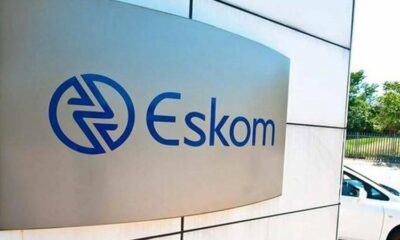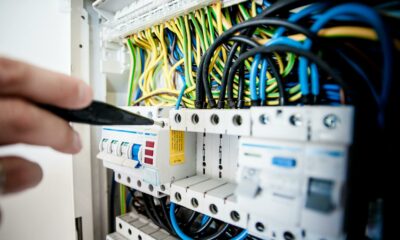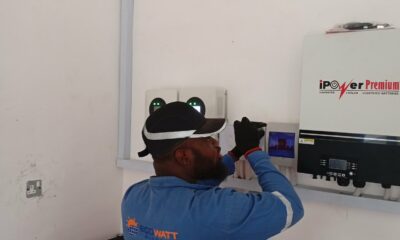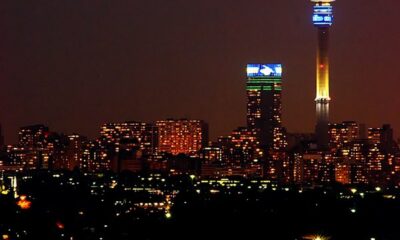Business
The Great Power Shift: Why South Africans Are Finally Saying Goodbye to Eskom

South Africa’s Quiet Power Revolution
Something remarkable is happening across South Africa in 2025. While load-shedding has almost faded into memory, thousands of homes and businesses are taking matters into their own hands, literally turning their backs on Eskom and plugging into private power.
The shift isn’t driven by fear anymore. It’s driven by choice, and by economics. Solar has become more affordable, batteries more efficient, and electricity tariffs from the grid more punishing. The result: South Africa is in the middle of one of the fastest energy transitions in its history.
Rooftops Lighting the Way
By the end of August 2025, the National Transmission Company of South Africa (NTCSA) estimated that behind-the-meter rooftop solar capacity had reached 7,345 megawatts. That’s up by over a gigawatt from the start of the year, a huge leap that could offset roughly one full stage of load-shedding on its own.
And the growth isn’t slowing down. According to the Council for Scientific and Industrial Research (CSIR), solar installations produced enough energy by mid-year to support 5% of the country’s total demand. While households are certainly contributing, most of that power comes from businesses that have the space, capital and incentive to generate their own electricity.
Businesses Lead the Charge
Corporate South Africa has turned into the country’s most powerful energy investor. Former Eskom CEO André de Ruyter told delegates at the BizNews Investment Conference in September that businesses had added over 6,100 megawatts of private generation within just 18 months.
The numbers from regulators tell a slightly different story: roughly 5,000 megawatts of new private capacity in the last three years, but either way, the direction is clear. Since 2018, Nersa has registered more than 12,700 megawatts of private generation capacity worth R293 billion in investment.
To put that in perspective, the combined output of Eskom’s Kusile and Medupi coal power stations, built over more than a decade, totals 9,600 megawatts at a cost of R467 billion. Private power has effectively overtaken the country’s most expensive public power projects in less than half the time.
Solar Outshines Coal
Between 2022 and 2025, rooftop solar installations outpaced both new coal and utility-scale renewable projects by a wide margin. In the past three years alone, solar has added over 5,000 megawatts, more than triple what Eskom and independent producers combined have achieved.
It’s not just a rooftop trend anymore; it’s a shift in national infrastructure.
A Record-Breaking Year for Private Power
Despite a quieter year in 2024, registrations have exploded again in 2025. In the first half of the year alone, 4,100 megawatts of private generation were registered, more than triple the same period in 2024. If the pace continues, 2025 could break all previous records for new energy registrations.
Even as load-shedding eased, installers told MyBroadband that demand for home solar systems is once again climbing, with many households pairing solar panels with battery backup systems to keep the lights on when the sun sets.
Eskom’s Grip Weakens
For the first time in decades, Eskom’s electricity demand is collapsing. NTCSA data shows that by week 39 of 2025, the utility’s total energy demand had dropped to 146,203 gigawatt-hours, down 2.9% from last year and 8.3% lower than before the private power boom began in 2021.
If the trend holds, South Africa’s total demand from Eskom could fall below 200,000 gigawatt-hours this year, the lowest since 2000.
The new landscape is clear: Eskom is no longer the centre of South Africa’s energy story.
Batteries: The Unsung Heroes
Solar may grab the headlines, but batteries are doing the heavy lifting after sunset. Since 2024, South Africa has imported roughly 24,000 megawatt-hours of lithium-ion batteries. These storage systems bridge the gap between daytime solar generation and evening power needs, keeping homes and businesses running smoothly.
According to the CSIR, this combination of solar and storage has even reduced peak electricity demand by about 1,500 megawatts, proving that distributed power can stabilise the grid when used at scale.
The End of an Era, The Start of a New One
For the first time in decades, Eskom is watching its dominance fade. What began as a survival tactic against blackouts has evolved into an independence movement, one powered by rooftops, innovation, and frustration turned into action.
South Africans aren’t just saying goodbye to load-shedding. They’re saying goodbye to dependency. The country that once sat in the dark is now lighting its own way forward.
Also read: OUTA’s Court Battle Could Finally End Impunity in South Africa’s State-Owned Entities
Follow Joburg ETC on Facebook, Twitter, TikT
For more News in Johannesburg, visit joburgetc.com
Source: MyBroadband
Featured Image: Business Tech



























